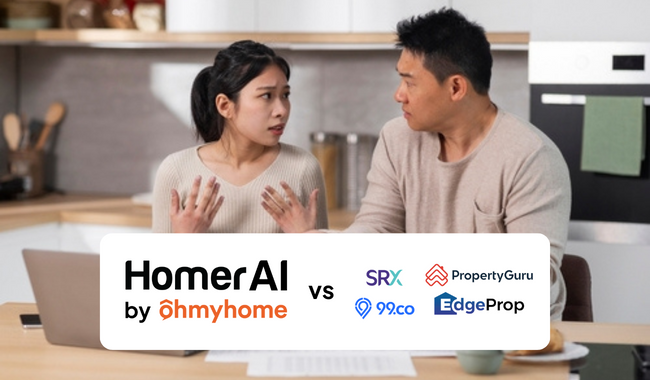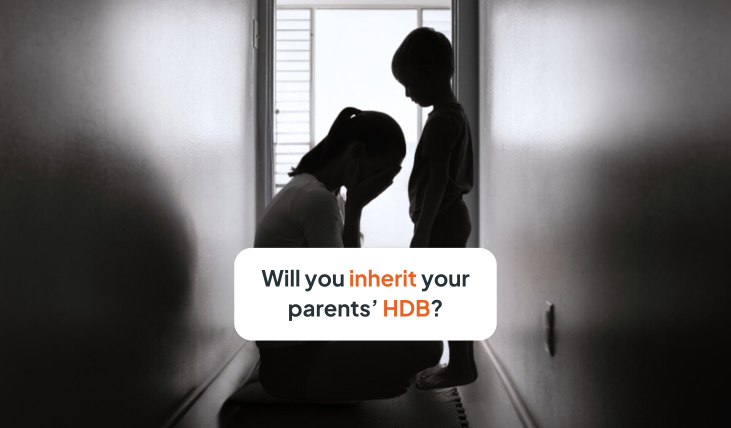It’s a truth universally acknowledged that homebuyers are concerned about a property’s price and affordability the most. And when comparing properties, as you usually do to determine which is more “value for money”, most buyers (usually of private properties) look at the price per square foot (PSF) instead of the quantum (or total price).
But here’s a conundrum: the smaller the unit, the higher the PSF value. The bigger the property, the lower the PSF.
Ever wondered why this is so?
Why does the PSF decrease as the square footage of the property increases?
For example, let’s compare these 2 past transactions at Lentor Modern:
| 2-bedroom + flex | 4-bedroom + flex |
| Transacted Q4 2022 | Transacted Q4 2022 |
| 5th floor | 5th floor |
| 732 sq ft | 1,528 sq ft |
| $2,225 psf | $2,005 psf |
| $1.6 million | $3 million |
A 2-bedroom + flex unit (732 sq ft) on the 5th floor was sold at $2,225 psf ($1.6 million) and a 4-bedroom + flex unit (1,528 sq ft) on the same floor was sold at $2,005 psf ($3 million). The latter is practically twice the house, yet you don’t have to pay twice the amount.
How is this possible?
First, let’s break down how the PSF is even calculated. Here’s the general formula for the price per square foot:
Total price of the property ÷ Total square footage of the property = Price per square foot
Second, you have to understand how the total price of the property is determined.
For new launch condos, the floorings, built-in carpentry, and all the high-quality home appliances you see in the showflat are included in the PSF. Think about those Hansgrohe fittings, Bosch or Miele kitchenware, marble tiles and vinyl floorings. They figure into the total price of the property, including even the balcony and AC ledge space.

Now let’s put things into perspective.
If you divide the total value of the property (adding up all the costs of those relatively expensive items and areas) by smaller square footage, you end up with a higher PSF — even though the overall quantum decreases (as per our example above).
In contrast, with a larger home, there’s more square footage to spread the cost, so the PSF tends to be lower. But the total value of the property doubles, hence the higher overall quantum.
Because the PSF is directly affected by the size of the property, it is not the most accurate indicator of affordability. It’s like comparing apples and oranges; the playing field is not exactly equal. Though you may still find it useful to look at the PSF when you’re comparing properties of the same size and from the same development.
To make sure your price comparison is accurate, take note of these 5 factors as well:
#1: Don’t just compare the PSF. Take a look at the quantum value of the properties too.
Now let’s use a different example.
Say you’re looking for a 2-bedder in District 11, within the Newton/Novena area, and you come across 2 units from different projects with different PSF values.
| Project X | Project Y |
| D11 (Newton/Novena) | D11 (Newton/Novena) |
| 2-bedroom | 2-bedroom |
| 970 sq ft | 670 sq ft |
| $2.3k psf | $2.8k psf |
| $2.2 million | $1.9 million |
Project X is a 970 sq ft unit at $2.3k psf and Project Y is a 670 sq ft unit that’s around $2.8k psf.
Now, you think that you should go for the unit with the lower PSF as it is bigger. What a steal, right? You get to live in a premium location and enjoy more space!
But what if you have a tighter budget range? While the 670 sq ft unit has a higher PSF of $2.8k, it actually has a lower quantum of $1.9 million. This is $300k less than the 970 sq ft unit with a $2.3k psf and a total value of $2.2 million. As such, the higher PSF unit becomes more affordable when you look at the total quantum.
#2: Find out how old/young the development is.
But let’s say that the smaller and more affordable condo from Project Y is a new launch, which has its pros and cons. It could have more modern and newer facilities, but it’s not ready for immediate move-in. So if you’re tight on your timeline, it may not be the best option for you.
Meanwhile, the bigger and pricier condo from Project X is a resale and therefore ready for immediate move-in and may also be more furnished than the new launch unit. Though if you decide to sell it later on, you may face the issue of buyers being apprehensive about lease decay.

#3: Take a look at the size of the whole development too.
Bigger developments tend to have a lower PSF than smaller developments because they just have a lot more space to do more with. Smaller developments may try to squeeze more units into the plot of lands, reducing the size per unit and thus increasing the PSF.
#4: Don’t just look at the size, consider the layout as well.
On the other hand, as newer and smaller condo units are shrinking in size these days, they could fall within the same price range as older and larger units. Plus, even though they may be smaller in terms of square footage, the layout may be used more efficiently.
#5: As always, location matters.
So we’ve established that higher PSF means lower quantum, and lower PSF means higher quantum. Include location in that equation and the price difference may be even more pronounced. A 3-bedroom in a good location may have lower PSF than a 1-bedroom in a worse location, but you can bet the first one would cost 3-4X more than the latter option.
In summary, you shouldn’t just look at the PSF figure alone when comparing properties and their prices.
You have to consider these factors as well:
| Smaller unit, higher $PSF | Bigger unit, lower $PSF |
| Lower quantum | Higher quantum |
| Usually newer, with higher monthly maintenance costs | Usually older, with higher upkeep costs |
| Lesser space, but with a more efficient layout | Bigger space, but unit space may not be maximised |
| May not be ready for move-in immediately as a new launch | Ready for immediate move-in as a resale |
| Could be in a smaller development, so more units are squeezed into the plot | Could be in a bigger development, so more space to do more with |
| May be less furnished than resale, so higher renovation costs as well |
Drop us a message on WhatsApp or chat with us via our Live Chat at the bottom, right-hand corner of your screen to speak with a Relationship Manager or be connected to a Super Agent.
You can also let us know what type of property you’re specifically looking for and we’ll MATCH you with similar listings directly to your WhatsApp. Simply fill up this form and our algorithm will find properties that match your requirements and needs.



































































